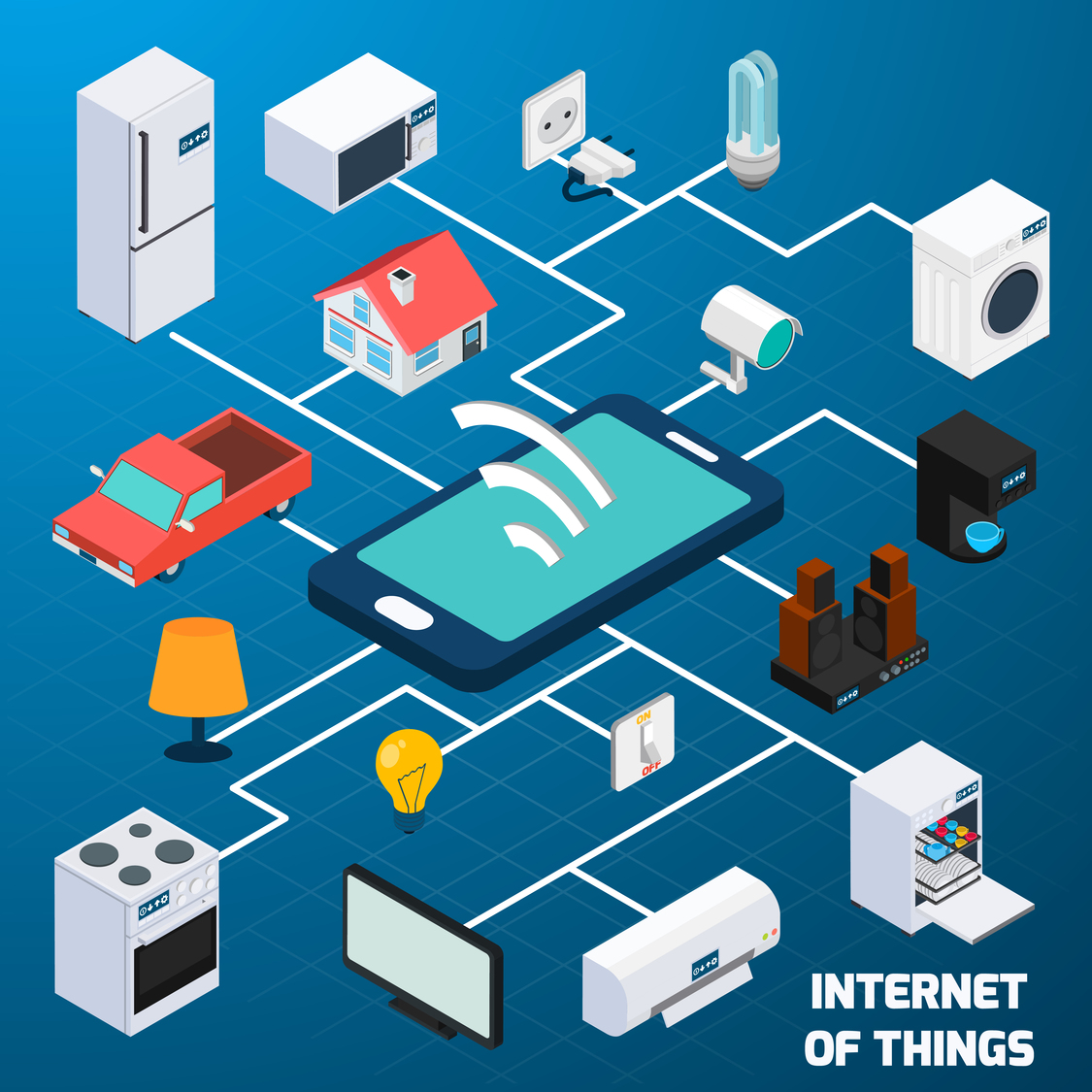IoT Testing Process for Building Robust Internet of Things (IoT) System
The Internet of Things (IoT) has become the backbone of digital transformation across industries. From smart homes and healthcare to connected cars and Industry 4.0, IoT is reshaping how humans and machines interact. With billions of connected devices transmitting sensitive data in real time, the demand for robust IoT testing has never been higher.
An IoT testing process is essential to validate the functionality, security, performance, and reliability of IoT ecosystems. Without proper testing, organizations risk downtime, security breaches, and poor user experiences issues that could cost millions.
In this article, we will explore in depth:
- What IoT testing is and why it is important
- The components of an IoT testing process
- Real-world use cases that highlight the need for IoT testing
- Key challenges and best practices
- Future trends in IoT testing
By the end, you’ll understand why IoT testing is critical for building resilient connected systems and how businesses can implement an effective IoT testing process to ensure success.
What is IoT Testing?
IoT testing is the process of verifying and validating that IoT devices, applications, and networks function as intended, meet performance benchmarks, and remain secure against cyber threats. Unlike traditional software testing, IoT testing must account for a vast ecosystem of sensors, devices, gateways, platforms, and cloud services.
An IoT testing process typically covers:
- Device-level validation (sensors, hardware, firmware)
- Application-level testing (mobile apps, dashboards, APIs)
- Network testing (Wi-Fi, Bluetooth, 5G, LPWAN, Zigbee)
- Data integrity checks across cloud and edge computing nodes
Simply put, IoT testing ensures the end-to-end reliability of smart ecosystems.
Why is IoT Testing Important in 2025?
IoT adoption is exploding. According to Statista, there are over 17 billion connected IoT devices in 2025, with the number expected to cross 29 billion by 2030. This massive growth, coupled with the increasing complexity of IoT architectures, makes testing absolutely critical.
Some reasons why IoT testing is indispensable include:
- Security Risks: With billions of endpoints, IoT is a hacker’s paradise. Testing identifies vulnerabilities before attackers can exploit them.
- User Experience: From smart homes to connected healthcare, seamless performance directly impacts user satisfaction.
- Compliance: IoT systems must adhere to strict regulations such as GDPR, HIPAA, ISO, FCC, and IEC.
- Scalability: As IoT networks grow, testing ensures devices and systems can scale without failures.
- Business Continuity: In industries like automotive, aerospace, and defense, IoT failures could be catastrophic.
Thus, a structured IoT testing process is no longer optional – it’s a strategic necessity.

As industries integrate billions of devices into agriculture, healthcare, manufacturing, logistics, and retail, the demand for robust IoT testing grows exponentially. Every connected device, whether a smartwatch, connected car, or industrial robot, must work flawlessly. From Bluetooth and Wi-Fi to 5G and satellite IoT, seamless connectivity is now a baseline expectation. Consider these scenarios:
Example 1 – After returning from a morning run, your smart door unlocks via biometrics, while sensors automatically trigger the coffee machine, water heater, and air purifier.
Example 2 – Parking your EV in a corporate lot triggers IoT sensors that activate your office AC, lighting, and digital workspace for a seamless start to the day
Such experiences demand a well-defined IoT testing process to ensure functionality, performance, and user satisfaction. By validating whether devices and software meet quality benchmarks, IoT testing has become critical for building a secure and reliable connected ecosystem.
IoT Testing Process
IoT systems are complex, consisting of hardware, firmware, connectivity, data pipelines, and applications. A comprehensive IoT testing process must evaluate each layer. Before IoT products hit the market, they must undergo rigorous IoT testing across multiple dimensions. The IoT testing process ensures reliability, compliance, and seamless integration within diverse architectures. The process broadly revolves around Security, Device Performance, Connectivity, Data Integrity, and Compliance. A modern IoT testing approach emphasizes Test-As-A-User (TAAS) to simulate real-world experiences, instead of relying solely on predefined requirements. Below are the major components of the IoT Testing Process:

End-user application testing
Validates usability and experience across end-user interfaces, such as mobile apps and web dashboards. Ensures IoT devices like wearables, smart appliances, and industrial machines integrate smoothly with applications.
Security Testing
The most crucial part of IoT testing. Devices transmit sensitive data—medical, financial, or personal – that must remain secure. Security-focused IoT testing checks:
- Authentication and authorization
- Data encryption/decryption
- Secure cloud storage
- Protection against malware and DDoS attacks
- Connectivity Testing
IoT devices rely on constant connectivity via Wi-Fi, 5G, Bluetooth, LoRaWAN, and Zigbee. Testing evaluates device behavior during offline states, roaming, or low-bandwidth conditions – ensuring smooth reconnection, notifications, and uninterrupted communication.
Performance Testing
IoT generates huge data volumes. Performance-based IoT testing process evaluates:
- Load handling
- Response times
- Scalability across millions of devices
- Low latency performance (critical for autonomous vehicles and healthcare)
Compatibility Testing
With diverse hardware, operating systems, and protocols, IoT requires rigorous compatibility checks. Testing ensures cross-platform interoperability across devices, cloud platforms, and edge systems.
Pilot Testing
Simulates real-world operating conditions before full-scale rollout. By testing under actual environments (e.g., smart factories, connected homes), issues are identified early, reducing deployment risks.
Regulatory/Compliance Testing
When it comes to IoT and IoT testing, regulatory and compliance challenges are likely to grow. In this IoT testing process, compliance of IoT applications for OFAC, HIPPA, GDPA, FDA, FCC, etc is determined. A regulatory test is done on the internal and external system to check if all the specified standards set by IEEE or W3C are met. The main objective of this test is to ensure that the system meets the standards, laws, policies, procedures, and guidelines after every development phase.
Upgrade Testing
All the Firmware, Hardware, OS, Devices used in the IoT systems will need to get upgraded as the technology advances. So, it becomes important for testers to perform a thorough regression testing of all the connected devices in real-time before releasing upgrades to the end-users, keeping all the above IoT testing process in mind.
Data Integrity Testing
Devices in the IoT system interact with each other and a lot of data exchange takes place. Hence, one of the aspects of the IoT testing process is to check the data integrity of IoT systems where the quality of data, accuracy, format, compatibility, and sanctity of data is tested. The data is validated from various devices, database, gateways and IoT servers.
Challenges in IoT Testing
While the IoT testing process is essential, it comes with unique challenges:
- Device Diversity: Thousands of device types with different hardware, OS, and firmware.
- Scalability: Testing at scale for millions of devices is resource-intensive.
- Security Complexity: Constantly evolving cyber threats require continuous testing.
- Network Variability: IoT must function under diverse network conditions (urban 5G vs. rural LPWAN).
- Cost & Time: Building realistic test environments can be expensive.
Overcoming these challenges requires automation, AI-driven testing, and cloud-based simulation tools.
Best Practices for a Successful IoT Testing Process
To implement effective IoT testing, organizations should:
- Adopt a Test-As-A-User (TAAS) approach to replicate real-world conditions.
- Leverage AI and ML for predictive testing and anomaly detection.
- Use digital twins to simulate environments before real-world deployment.
- Implement continuous testing within CI/CD pipelines.
- Prioritize security-first testing at every layer.
- Standardize protocols and frameworks for interoperability.
Real-World Use Cases of IoT Testing
- Healthcare IoT – Testing ensures wearable medical devices accurately transmit patient vitals while complying with HIPAA regulations.
- Smart Homes – IoT testing validates interactions between devices like smart locks, lighting, and voice assistants.
- Automotive IoT – Connected cars require low-latency performance testing to ensure safety in autonomous driving.
- Industrial IoT (IIoT) – Testing ensures reliability in predictive maintenance and factory automation.
- Defense & Aerospace – Mission-critical IoT systems require extreme reliability and compliance testing to avoid operational risks.
Future of IoT Testing: Trends in 2025 and Beyond
As IoT evolves, so will IoT testing processes. Key trends shaping the future include:
- 5G-Enabled Testing – Ultra-low latency networks require specialized performance tests.
- AI-Driven Automation – Machine learning will automate regression and predictive testing.
- Edge Computing Validation – Testing will expand to cover edge AI models for faster processing.
- Blockchain Integration – Testing for decentralized IoT systems using blockchain-based security.
- Sustainability Testing – Ensuring IoT devices consume minimal energy and align with green standards.
Frequently Asked Questions (FAQs)
Q1. What is the difference between IoT testing and traditional software testing?
IoT testing covers hardware, sensors, and networks in addition to software, making it broader and more complex.
Q2. How often should IoT devices undergo testing?
Ideally, IoT devices should undergo continuous testing—especially during firmware upgrades and security patching.
Q3. Can IoT testing be automated?
Yes. AI and ML-driven automation tools can simulate real-world conditions, reducing time and cost.
Q4. What industries benefit the most from IoT testing?
Healthcare, automotive, manufacturing, retail, defense, and smart cities.
Q5. What is TAAS in IoT testing?
TAAS (Test-As-A-User) replicates real-world scenarios to ensure IoT systems deliver intuitive user experiences.
Conclusion
The IoT testing process is the foundation of reliable, secure, and user-friendly IoT ecosystems. As the number of connected devices skyrockets, testing ensures interoperability, performance, and compliance across industries. From healthcare to defense, IoT testing safeguards mission-critical operations while enhancing customer trust.
At Mistral, we bring 27+ years of expertise in IoT solutions—offering end-to-end IoT testing services that cover devices, networks, platforms, and cloud systems. By combining automation, AI-driven testing, and compliance validation, we accelerate time-to-market while ensuring your IoT systems are robust, secure, and future-ready.




